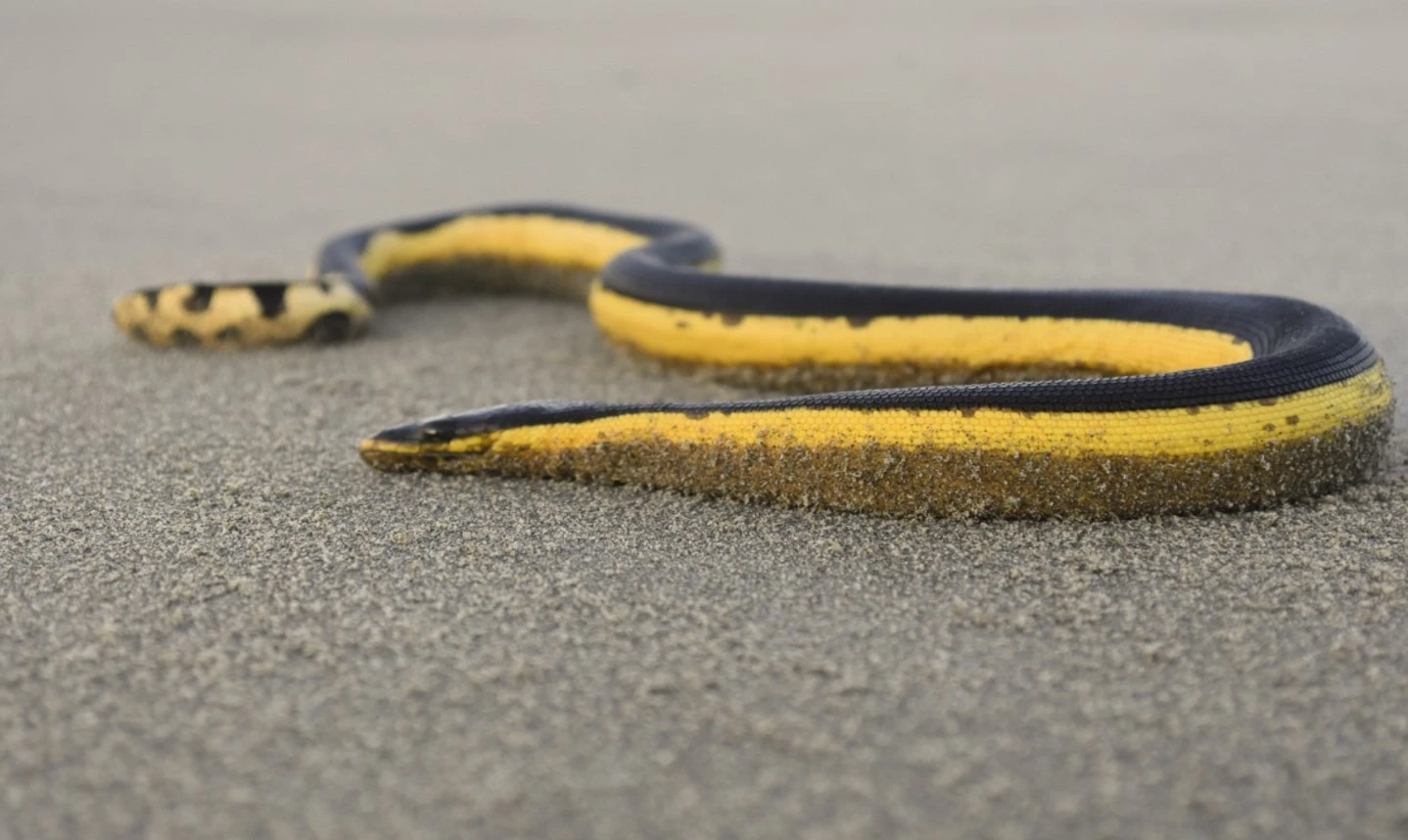The mysterious world beneath the tangled roots of mangrove forests harbors one of nature’s most remarkable reptilian adaptations: snakes that have evolved to thrive in saltwater environments. While most snakes are strictly terrestrial or freshwater species, a select few have developed extraordinary physiological mechanisms to conquer the challenging boundary between land and sea. Among these specialized reptiles, the saltwater mangrove snake stands out as a fascinating example of evolutionary ingenuity. These remarkable creatures have mastered life in one of Earth’s most dynamic ecosystems, where tides constantly shift the boundary between aquatic and terrestrial domains. Their unique adaptations and behaviors offer a compelling window into the incredible diversity of reptilian life and the remarkable ways animals can adapt to challenging ecological niches.
The Unique Habitat of Mangrove Forests

Mangrove forests represent one of our planet’s most distinctive coastal ecosystems, thriving at the dynamic intersection of land and sea. These remarkable forests are characterized by salt-tolerant trees with complex root systems that form impenetrable barriers against coastal erosion and storm surges. Twice daily, tidal fluctuations transform these forests from terrestrial to aquatic environments, creating a constantly shifting habitat that demands extraordinary adaptability from its inhabitants. Mangroves are found primarily in tropical and subtropical coastal regions across Asia, Australia, Africa, and the Americas, forming critical nurseries for countless marine species and providing essential ecosystem services. This challenging environment, with its fluctuating salinity levels, oxygen-poor soils, and constantly changing water levels, has driven the evolution of highly specialized creatures like the saltwater mangrove snake.
Meet the Yellow-Bellied Sea Snake
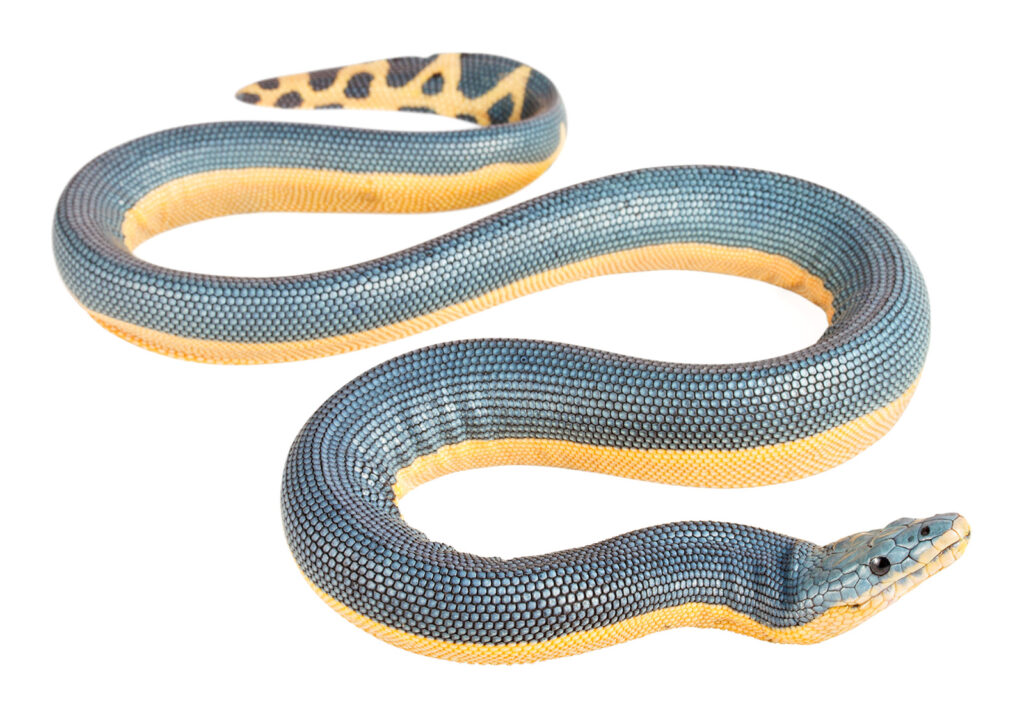
The Yellow-bellied Sea Snake (Hydrophis platurus) represents one of the most widely distributed reptiles on Earth and occasionally ventures into mangrove ecosystems. This fully marine snake displays a distinctive two-tone coloration pattern – a dark brownish-black upper body that contrasts sharply with its bright yellow underbelly, creating perfect camouflage in ocean waters. Growing to lengths between 2 and 3 feet, this slender serpent possesses a flattened, paddle-like tail that propels it efficiently through coastal waters with graceful, undulating movements. Unlike many sea snakes that must occasionally return to land, the Yellow-bellied Sea Snake spends its entire life in marine environments, giving birth to live young directly in the water and feeding exclusively on small fish that it immobilizes with its potent neurotoxic venom. While primarily oceanic, these remarkable snakes sometimes enter mangrove channels during high tides, particularly when pursuing prey or seeking shelter from storms.
The Mangrove Snake (Boiga dendrophila)
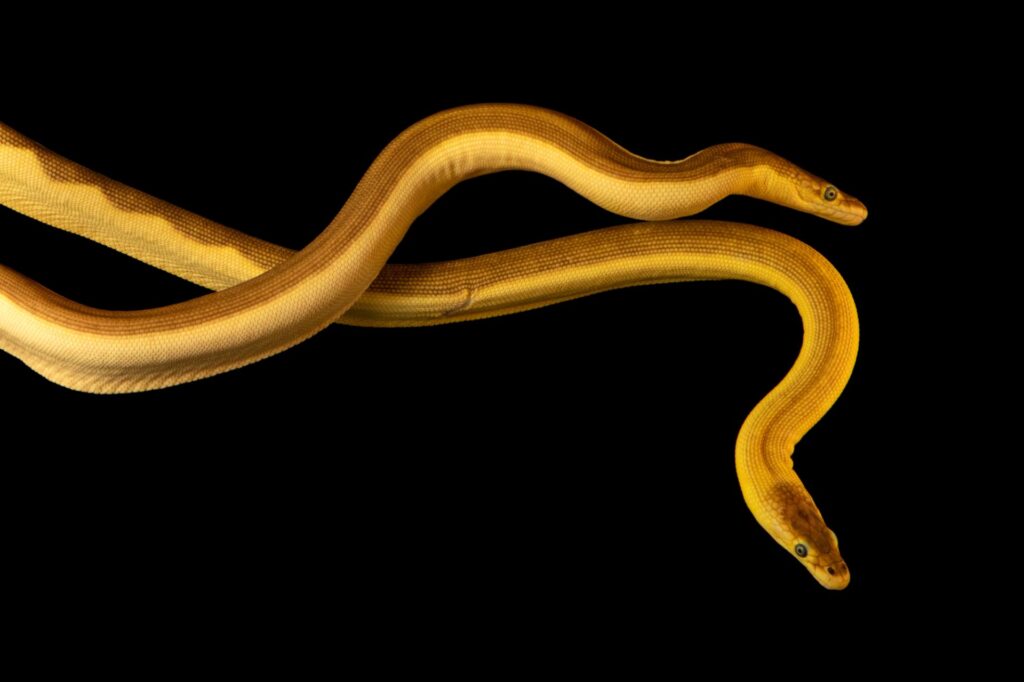
The Mangrove Snake, scientifically known as Boiga dendrophila, is a striking arboreal colubrid found throughout Southeast Asia’s coastal forests. This impressive serpent displays a glossy black body adorned with vibrant yellow bands, earning it the alternative name “Gold-ringed Cat Snake” among enthusiasts and researchers alike. Growing to lengths between 5 and 8 feet, these predominantly nocturnal hunters possess mildly venomous rear fangs used to subdue a diverse diet of birds, lizards, frogs, and small mammals encountered throughout the mangrove canopy. Unlike fully marine species, the Mangrove Snake has adapted to life in brackish environments rather than open saltwater, moving comfortably between the trees and shallow water with equal dexterity. These snakes have become perfectly adapted to the mangrove ecosystem, using the complex root systems as both hunting grounds and refuge from predators.
The True Saltwater Specialist: Beaked Sea Snake
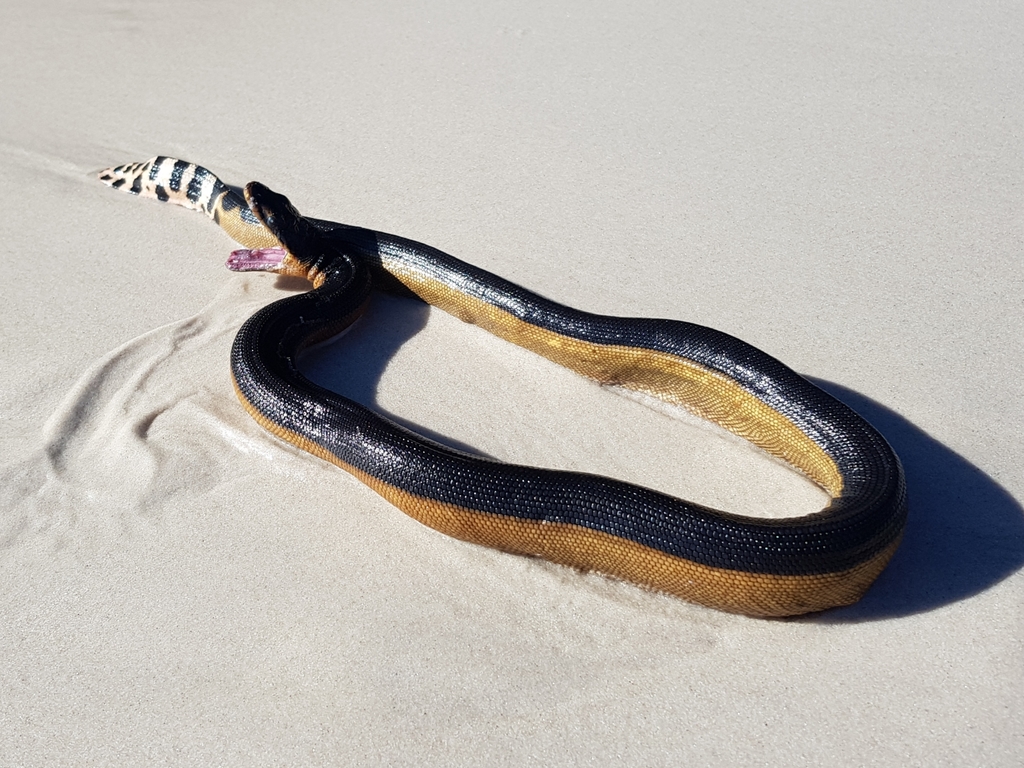
The Beaked Sea Snake (Hydrophis schistosus), also known as the Hook-nosed Sea Snake, represents one of the most dangerous and specialized mangrove-dwelling serpents in the world. With a distinctive olive to dark gray coloration crossed by faint darker bands, this species possesses a uniquely shaped snout that gives it both its common names and helps it probe crevices for prey. Growing to approximately 3-4 feet in length, these highly venomous elapids possess toxins estimated to be 4-8 times more potent than that of a cobra, making them responsible for numerous human fatalities across their range. The Beaked Sea Snake frequently patrols mangrove channels during high tides, hunting for various fish species, eels, and crustaceans that inhabit the root systems of these coastal forests. Their superior swimming abilities, coupled with specialized salt glands that help them process seawater, allow these snakes to thrive in environments that would prove fatal to most other reptiles.
Remarkable Physiological Adaptations
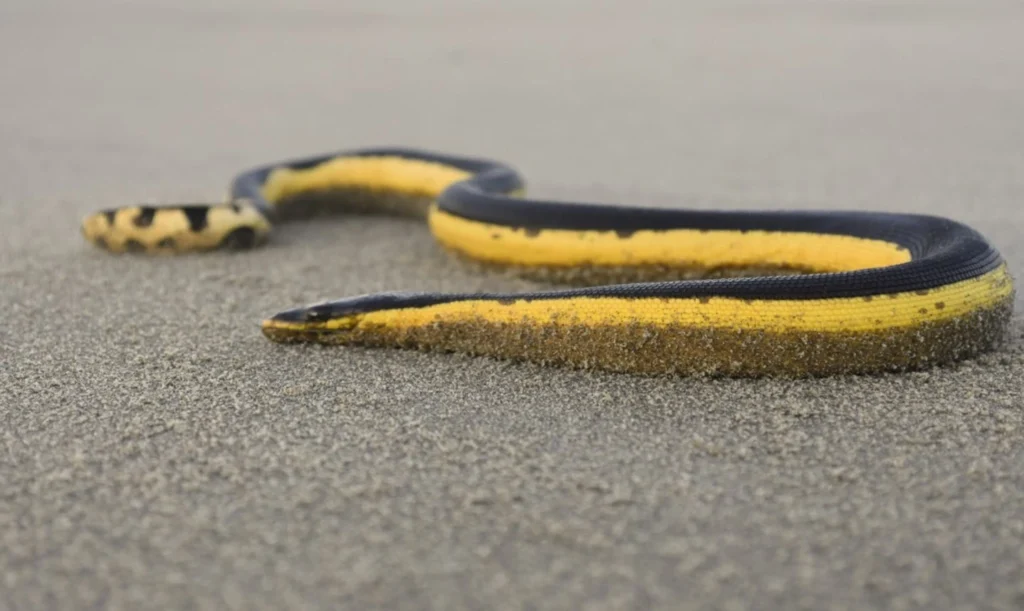
Saltwater mangrove snakes have evolved extraordinary physiological adaptations to overcome the challenges of marine environments. Most notably, specialized salt glands located near their eyes or beneath their tongue actively excrete excess salt, allowing these reptiles to maintain proper electrolyte balance despite constant exposure to seawater. Their lung capacity has increased dramatically compared to terrestrial relatives, enabling longer dive times—sometimes exceeding three hours—while hunting or evading predators beneath the surface. The skin of these specialized serpents has evolved to become nearly impermeable to saltwater, preventing dehydration in an environment that would rapidly desiccate ordinary snakes. Additionally, these remarkable reptiles have developed specialized valvular nostrils that seal tightly when underwater and a flattened, paddle-like tail that provides efficient propulsion through water while maintaining the stability needed to navigate the tangled mangrove root systems.
Behavioral Adaptations to Tidal Living
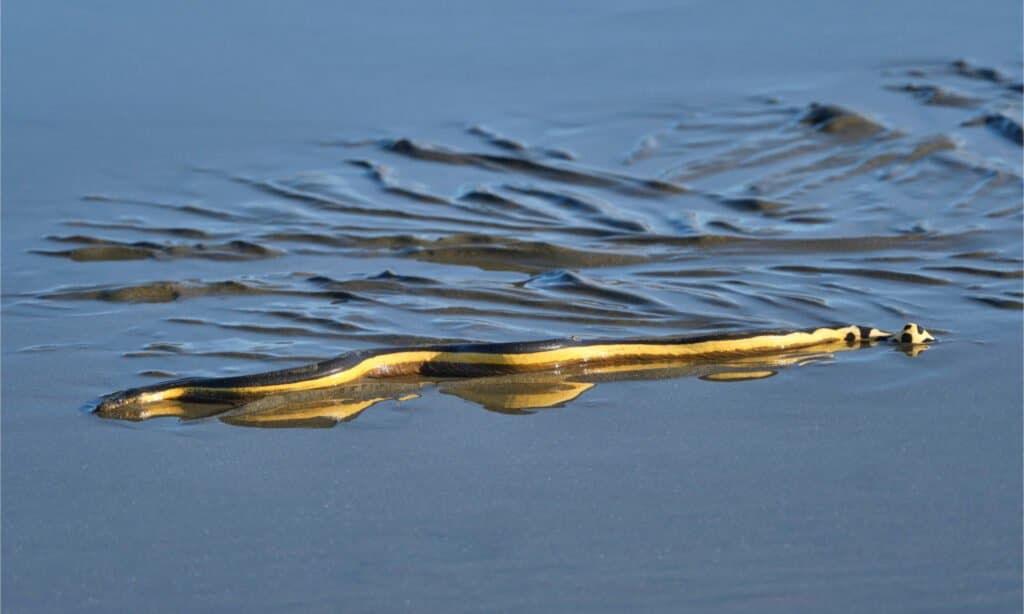
Saltwater mangrove snakes have developed sophisticated behavioral strategies to navigate the challenges of life in a tidally influenced environment. During high tides, these opportunistic hunters become more active, swimming through flooded mangrove forests to access prey that would otherwise remain out of reach. When tides recede, many species retreat to elevated positions among mangrove branches or coil within the complex aerial root systems, avoiding potential terrestrial predators while conserving energy. Some species, like the Mangrove Snake, have developed remarkable climbing abilities, using their semi-prehensile tails to navigate the three-dimensional maze of branches with impressive agility and precision. Researchers have observed that these snakes often synchronize their feeding and reproductive behaviors with tidal cycles, taking advantage of the influx of potential prey during high waters and using the predictable rhythm of tides as environmental cues for various life processes.
Hunting and Feeding Strategies
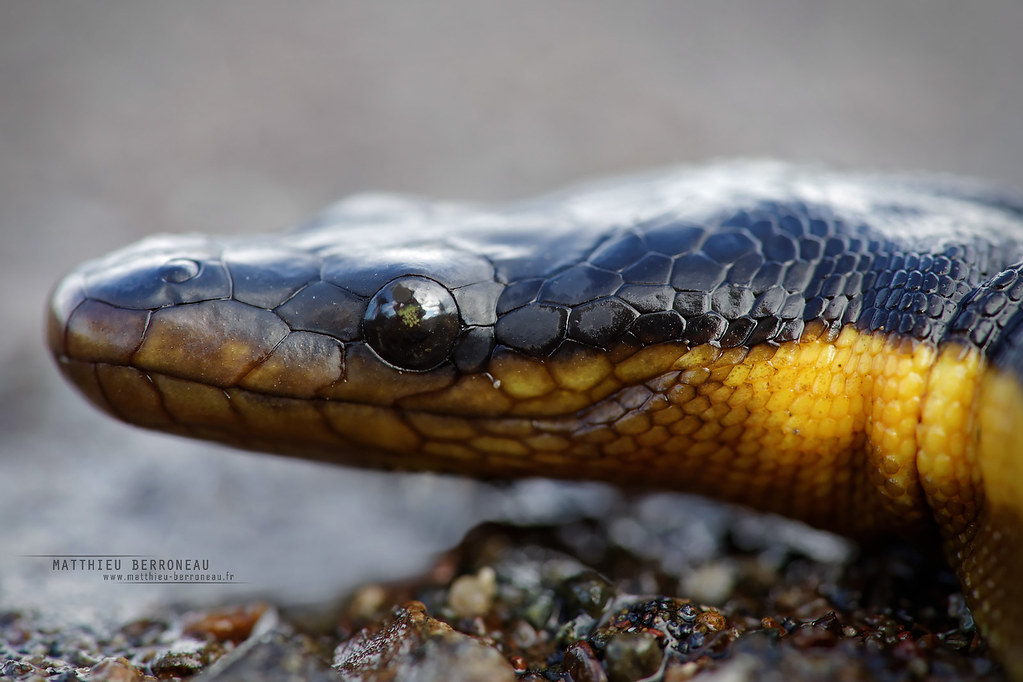
Saltwater mangrove snakes employ diverse and specialized hunting techniques perfectly adapted to their unique environment. Many species utilize an ambush strategy, remaining motionless among mangrove roots until unsuspecting fish, crustaceans, or small wading birds come within striking distance. The highly venomous sea snake species that venture into mangroves have evolved extraordinarily potent neurotoxins that immobilize aquatic prey almost instantly, preventing escape in the three-dimensional underwater environment. Some mangrove specialists have developed heightened sensitivity to water vibrations through modified scale structures, allowing them to detect prey movements even in murky, sediment-filled waters with near-zero visibility. Interestingly, research has revealed that several mangrove snake species alter their hunting techniques based on tidal conditions—actively swimming and pursuing prey during high water, then shifting to ambush tactics as tides recede and water clarity diminishes.
Reproduction in a Challenging Environment

Reproduction for saltwater mangrove snakes presents unique challenges that have driven remarkable evolutionary adaptations across different species. The majority of sea snakes that frequent mangroves have evolved viviparity (live birth), a crucial adaptation that eliminates the vulnerability of external eggs in an environment regularly submerged by unpredictable tides. Female snakes often seek out specific microhabitats within the mangrove ecosystem for birthing, typically selecting areas with moderate salinity and reduced predator presence to give their offspring the best chance of survival. In some species, pregnant females will migrate from open ocean habitats specifically to mangrove nursery areas, recognizing these complex ecosystems as ideal environments for vulnerable juveniles to find food and shelter. Young snakes typically display innate swimming and hunting behaviors immediately after birth, allowing them to navigate the challenging mangrove environment without parental care or guidance.
Conservation Status and Threats
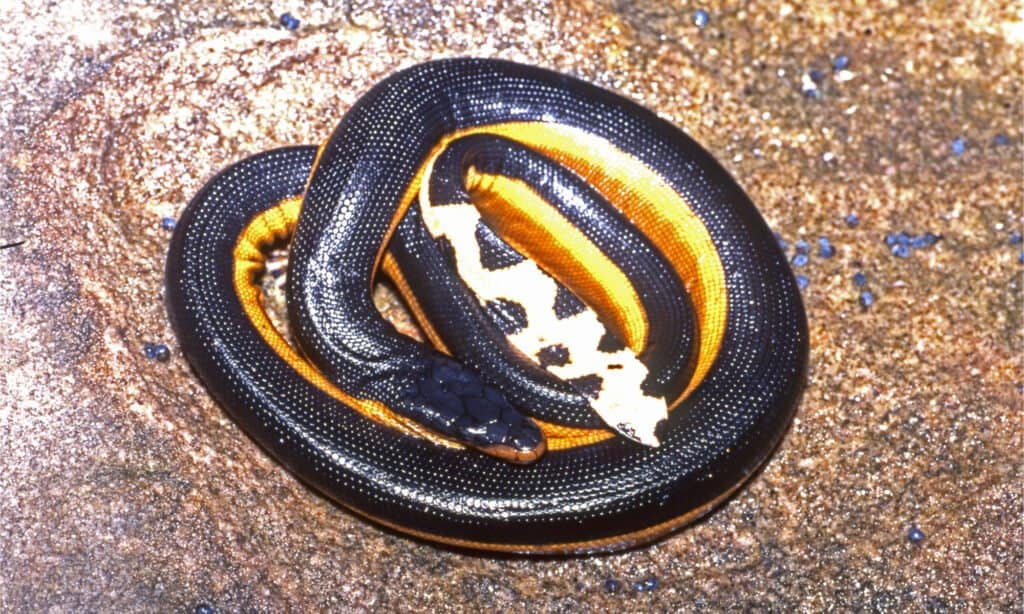
Many saltwater mangrove snake species face significant conservation challenges due to both direct human activities and broader environmental changes affecting their specialized habitat. Coastal development has resulted in the destruction of approximately 35% of the world’s mangrove forests over the past several decades, directly eliminating critical habitat for these specialized reptiles. Commercial fishing operations frequently catch sea snakes as bycatch, with mortality rates exceeding 50% even when snakes are promptly returned to the water. Climate change poses perhaps the most serious long-term threat, as rising sea levels alter the delicate balance of freshwater and saltwater that defines mangrove ecosystems, potentially rendering large areas unsuitable for these specialized serpents. Additionally, in certain regions, these snakes face direct harvesting for their meat, skin, and use in traditional medicines, further pressuring already vulnerable populations.
The Deadly Venomous Species
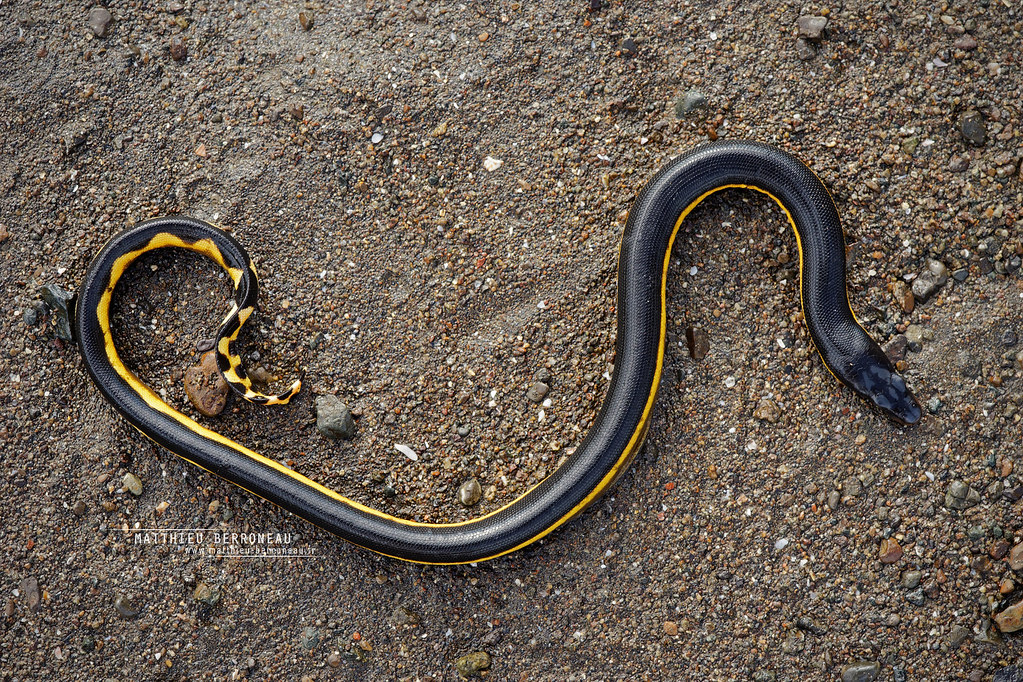
Several highly venomous snake species have adapted to life in saltwater mangroves, representing some of the world’s most dangerous reptiles. The Beaked Sea Snake, frequently found in Indo-Pacific mangrove systems, possesses venom approximately 8 times more potent than that of a cobra, with a single bite containing enough toxin to kill multiple adult humans. Another lethal species, the Spine-bellied Sea Snake (Hydrophis curtus), regularly hunts in mangrove channels, delivering a potent neurotoxic venom that attacks the victim’s nervous system, potentially causing respiratory failure within hours if left untreated. These venomous specialists have evolved their potent toxins primarily as a hunting adaptation rather than for defense, allowing them to rapidly immobilize fast-moving fish in the three-dimensional underwater environment. Despite their potentially lethal capabilities, most mangrove-dwelling venomous snakes are not aggressive toward humans and typically bite only when directly threatened or accidentally contacted by fishermen or waders.
Ecological Importance in Mangrove Ecosystems
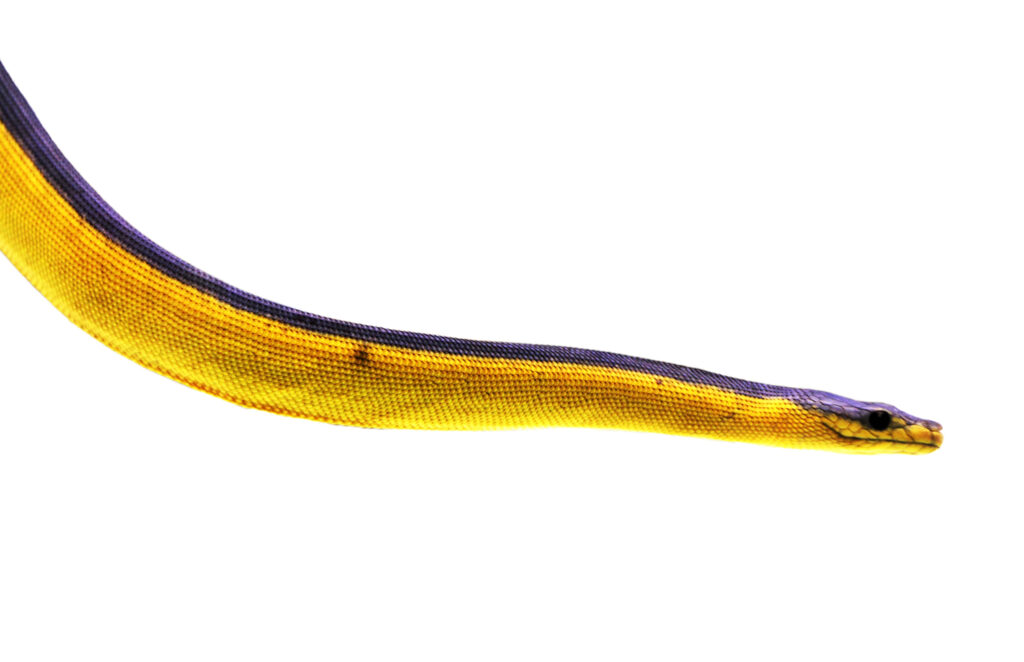
Saltwater mangrove snakes fulfill vital ecological roles that contribute significantly to the health and balance of these critical coastal ecosystems. As mid-level predators, these serpents help regulate populations of fish, crustaceans, and small mammals that might otherwise overgraze vegetation or disrupt nutrient cycling within the mangrove system. Their hunting activities often concentrate in specific microhabitats, creating localized changes in prey behavior that influence everything from nutrient distribution to sediment composition throughout the ecosystem. When these snakes fall prey to larger predators like birds of prey, crocodilians, or larger fish, they serve as important links in complex food webs that connect aquatic and terrestrial energy flows. Additionally, research suggests that the mere presence of these predatory snakes creates “landscapes of fear” that alter prey movement patterns and feeding behaviors, indirectly affecting vegetation growth patterns and ecosystem structure throughout mangrove forests.
Research Challenges and Recent Discoveries

Studying saltwater mangrove snakes presents researchers with extraordinary challenges that have limited our understanding of these fascinating reptiles until relatively recently. The inaccessible nature of mangrove forests, with their dense vegetation, deep mud, and tidal fluctuations, makes traditional field observation techniques exceptionally difficult to implement effectively. Recent technological innovations, including environmental DNA sampling, acoustic tracking devices, and remote camera systems, have revolutionized research capabilities, revealing previously unknown aspects of these snakes’ ecology and behavior. One particularly surprising discovery involved the confirmation that certain sea snake species can remain submerged for over three hours by absorbing up to 33% of their oxygen requirements directly through their skin, an adaptation previously unknown in reptiles. Genetic studies have also revealed unexpected diversity within mangrove snake populations, suggesting that cryptic speciation may be more common than previously recognized, potentially leading to the identification of numerous previously undescribed species in the coming years.
Human Interactions and Cultural Significance
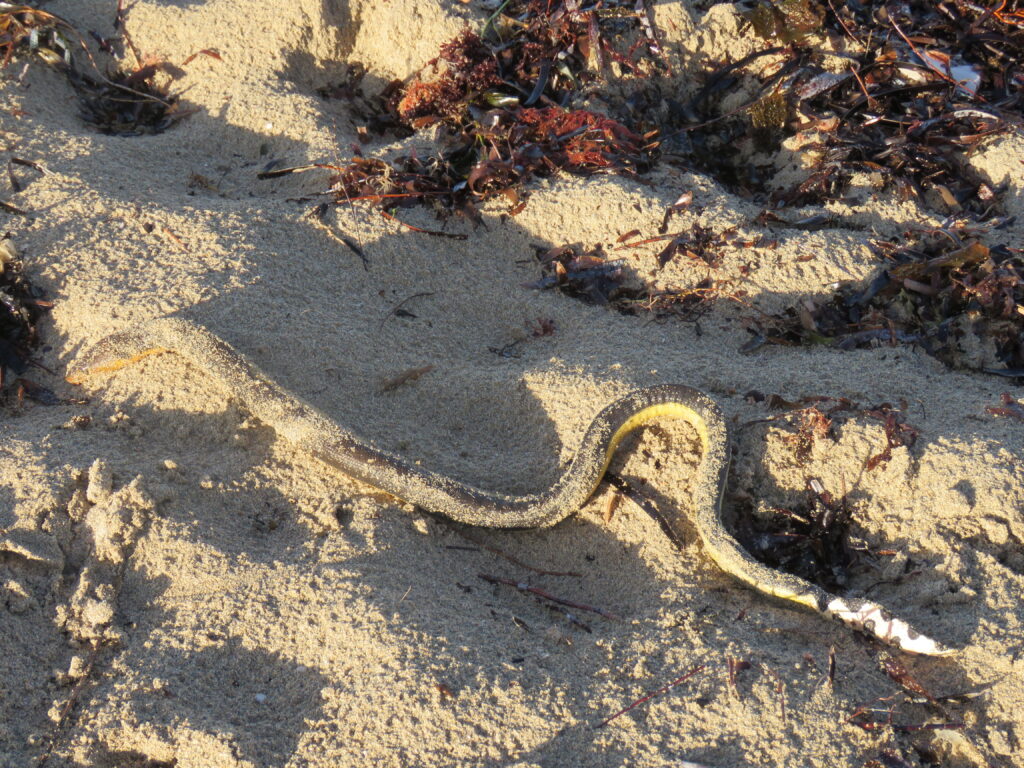
Throughout their range, saltwater mangrove snakes have developed complex relationships with human communities that often blend practical concerns with deep cultural significance. In parts of Southeast Asia, certain venomous sea snake species are harvested commercially for their meat, which is considered a delicacy and sometimes attributed with medicinal properties in traditional healing systems. Indigenous communities living alongside mangrove forests have developed sophisticated ecological knowledge about these serpents, often incorporating them into creation myths, folklore, and spiritual practices that emphasize the interconnectedness of coastal ecosystems. For fishermen working in mangrove-dominated coastlines, practical knowledge about identifying and avoiding dangerous snake species represents critical safety information passed through generations. In recent years, ecotourism operations have begun highlighting these fascinating reptiles as part of educational mangrove tours, creating economic incentives for conservation while raising awareness about these often-misunderstood creatures.
Future Prospects for Mangrove Snakes
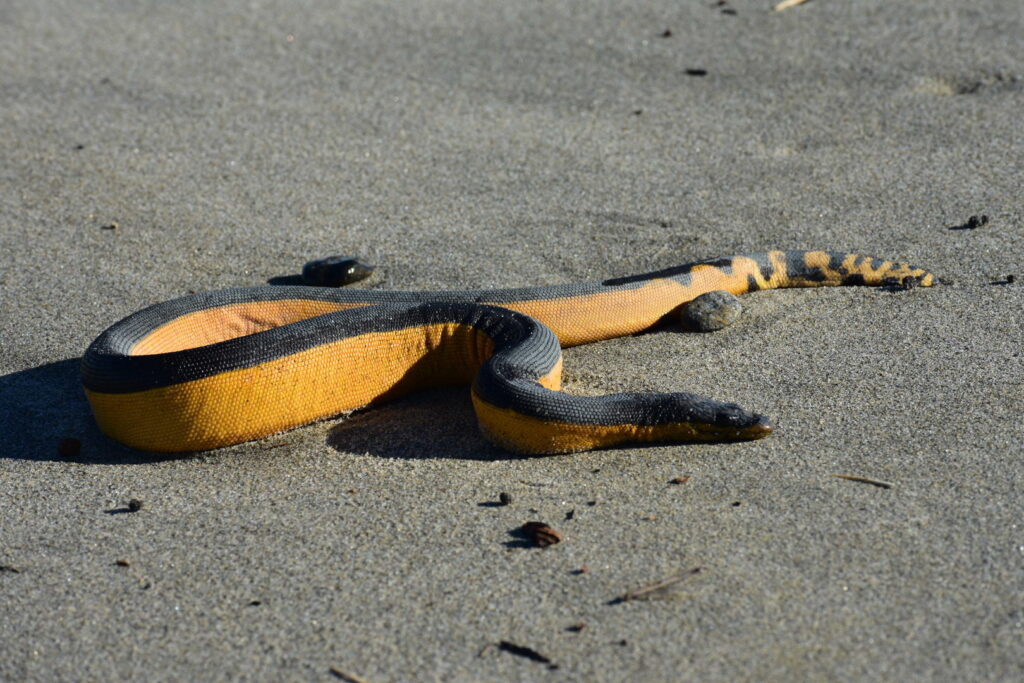
The future for saltwater mangrove snakes remains precarious yet not without hope as conservation awareness and protective measures gradually increase across their range. Emerging research suggests that certain snake species demonstrate remarkable resilience and adaptability to changing conditions, potentially allowing them to adjust to moderate climate changes provided sufficient habitat remains intact. International conservation initiatives focused on mangrove ecosystem preservation have accelerated in recent years, with organizations like the Global Mangrove Alliance working to increase protected mangrove areas by 20% by 2030. Advanced breeding programs for some threatened species have shown promise, though the specialized nature of mangrove habitats makes reintroduction particularly challenging compared to other conservation efforts. Perhaps most encouraging is the growing recognition of mangroves’ importance for carbon sequestration and coastal protection, creating powerful economic and social incentives for their preservation that indirectly benefit the remarkable snakes that call these forests home.
The saltwater mangrove snake represents one of nature’s most remarkable examples of specialized adaptation. These fascinating reptiles have conquered the challenging boundary between land and sea through extraordinary physiological and behavioral adaptations that allow them to thrive where few other serpents could survive. As we continue to unravel the mysteries of these elusive creatures, their importance to mangrove ecosystems becomes increasingly apparent. With growing conservation efforts focused on preserving the critical mangrove habitats they depend upon, there remains hope that these remarkable snakes will continue their evolutionary journey far into the future, silently patrolling the boundary between worlds as they have for millions of years. Their story reminds us that even in our well-documented natural world, remarkable adaptations and ecological relationships await discovery beneath the tangled roots of one of Earth’s most vital yet threatened ecosystems.

